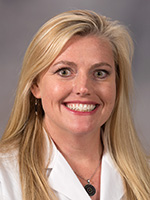Routine oral health care check can reveal overall well-being
NOTE: This article originally appeared in the October 2017 issue of CONSULT, UMMC's monthly electronic newsletter. To have CONSULT, and more stories like this, delivered directly to your inbox, click here to subscribe.
Good oral health is more than having a bright, pretty smile.

A person’s oral health can give clues to his or her overall well-being as well, according to Dr. Amy Sullivan, professor of oral hygiene at the University of Mississippi School of Dentistry.
“Oral health is a little look, a window, into what’s going on in the overall body,” she said. She said sometimes a dental hygienist or dentist can see signs of other health conditions just by looking in a patient’s mouth.
Sullivan said nutritional deficiencies can cause gum bleeding, and being slow to heal can be a sign of diabetes. Poor oral health also has been linked to cardiovascular disease, stroke and low birthweight babies.
Three of the most common oral health concerns that a patient will be screened for during a routine dental visit are dental decay, gum disease and oral cancer, Sullivan said.
Tooth decay
Called dental caries or carious lesions by dental professionals, tooth decay can be an ugly and painful problem inside one’s mouth.
Sullivan said one of the biggest culprits in tooth decay is sugar in the diet.
![]() “Everyone has bacteria in their mouth, hiding under the gums and between the teeth,” she said. When a person eats sugar, it combines with the bacteria to form an acid on the teeth. “That’s where the decay comes from.”
“Everyone has bacteria in their mouth, hiding under the gums and between the teeth,” she said. When a person eats sugar, it combines with the bacteria to form an acid on the teeth. “That’s where the decay comes from.”
If giving up sugar altogether is not in a patient’s future plans, Sullivan recommends being mindful of how and when that sugar is consumed.
“If you have a cup of Coke with your meal, it’s not as bad as if you sipped on that Coke all day long,” she said.
Not a big soda drinker? Sullivan said to keep in mind many foods and beverages besides soft drinks and candy contain sugar. Milk has a high natural sugar content and even some fruits and fruit juices do as well.
Daily brushing and flossing will help remove bacteria from the teeth. She recommends the following brushing tips:
• Use a soft-bristled brush twice a day for two minutes each to remove bacteria from the teeth. Electric toothbrushes are great, too!
* Hold the brush at a 45-degree angle along the gum line and gently jiggle back and forth to dislodge bacteria and debris.
* Whether using string floss, an air flosser, a water flosser, interdental brushes or floss picks, clean between the teeth and around the gum line once each day.
Gum disease
Bacteria remaining along and under the gum line will lead to unhealthy gums and eventually periodontal disease, another name for gum disease.
The first stage of gum disease is gingivitis, which causes the gums to be red and swollen. A person with gingivitis will likely experience bleeding of the gums as well.
 Sullivan said this early stage of gum disease is the only one that is reversible.
Sullivan said this early stage of gum disease is the only one that is reversible.
“This is when we want to see you in the office, while there is still time to stop the progression of gum disease,” she said.
Adopting good habits of brushing, flossing and regularly seeing a dental hygienist for a professional cleaning will stop the progression of gum disease before bone loss occurs.
Why is a professional cleaning important? Tartar – what the professionals call calculus – hardens on the teeth around the gum line and cannot be removed by regular brushing and flossing.
“If you have a lot of tartar on your teeth, it is like having a mansion for the bacteria to live and build up,” Sullivan said. She recommends a hygienist remove this hard buildup every six months to keep gum disease at bay. For some patients, more frequent visits may be necessary.
During the visit, the hygienist also can take measurements with a probe at the gum line and radiograms, also known as X-rays, to determine if any bone has been lost. Although bone loss can’t be reversed, Sullivan said starting a good oral hygiene routine can stabilize the situation and keep more bone from being lost.
Oral cancer
The third – and potentially deadly – oral health concern a dentist or hygienist will screen for is cancer.
“You can have oral cancer in your mouth even if you don’t have any teeth,” Sullivan said. “An exam is still important.”
![]() Dentists or hygienists look for the following during an oral cancer screening:
Dentists or hygienists look for the following during an oral cancer screening:
• a red or white patch,
• a sore that bleeds and doesn’t heal,
• a thick, hard spot or lump, and
• a crusted area.
The provider also will perform an exam outside of the mouth – the extra-oral exam – to feel under the patient’s chin, down the neck and around the tops of the shoulders.
“What we are looking for is something that doesn’t move around like a healthy lymph node would,” Sullivan said. “It stays there a long time. Maybe it is sensitive or has grown in size.”

High-risk areas for oral cancer include the soft palate, the sides of the tongue, under the tongue and on the floor of the mouth, said Dr. Tina Woods, assistant professor of oral and maxillofacial surgery and pathology.
“Many times the patient won’t even know that they have any unusual areas,” Woods said. If caught early, the patient may not have any symptoms.
Risk factors for oral cancer include smoking, drinking and using smokeless tobacco. Sun exposure is a risk factor for cancer on the lips.
“We all know that early detection for all dental diseases is the key,” Sullivan said. “Make sure you get out to see your dental providers.”


